New Bird is the Word
Visible from the boardwalk overlooking the tapir habitat is the Zoo’s Cinereous vulture exhibit where guests can once more see the Zoo’s conservation efforts at work through the Species Survival Plan.
In September 2019, the Zoo’s two female vultures were given a breeding recommendation by the SSP, meaning they were being paired with males from other zoos. Due to COVID-19 travel restrictions throughout most of 2020, animal transfer plans were put on hold until October. At this time, the Zoo prepared for a departure of one of its females, Meera, as well as for the arrival of a male to be paired with the Zoo’s other female, Eve.
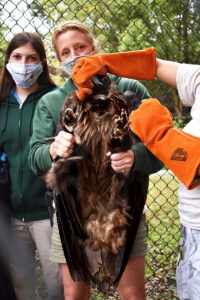
After a required pre-shipment exam confirmed Meera was in good health, she departed the Virginia Zoo and made the six-hour journey to her new home at the Riverbanks Zoo in South Carolina.
Upon her arrival, and after a brief quarantine period, she was introduced to her new mate, Walter. Riverbanks Zoo staff say the pair are acclimating well to each other and their new habitat, although Walter is still unsure of what to make of Meera. They also describe her as a “big help” when her Keepers are trying to clean their exhibit!
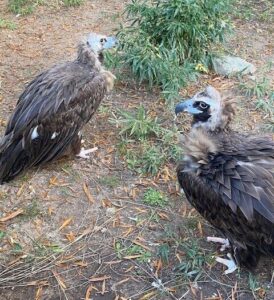
Just a few weeks later, a male vulture flies into Washington DC (via an airplane, of course) from the Living Desert Zoo in California, then makes the car-ride from DC to Norfolk. Once the male arrived at the Virginia Zoo, he was quarantined for 30 days before undergoing a physical exam from the Zoo’s veterinarian, Dr. Tara Reilly. With a clean bill of health, it was time for “John Denver” to meet his new mate.
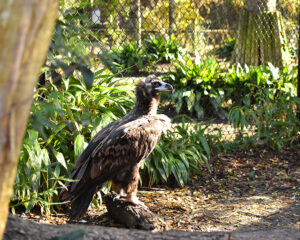
Quite the name, right? As an egg laid at the Denver Zoo, he was flown to the Living Desert Zoo before he even hatched to be raised by cinereous vulture foster parents. As an homage to the city he originally hailed from, Keepers lovingly named him John Denver. The four-year-old’s story continues as he is now paired with his new mate, Eve, who is more than fourteen years old.
Before the two were properly introduced to each other, our Zoo Manager, Crystal Matthews made a couple of habitat modifications including adding temporary mesh to split the exhibit into two spaces. This allowed the pair to see, hear and smell each other, but not come into contact yet, at least until our Zoo Manager felt the pair was comfortable enough around one another.
In mid-December, after about two days of living near each other, our Zoo Manager removed the mesh, allowing Meera and John Denver to interact. During the introduction, Keepers and Animal Care staff were on-site to observe each bird’s behaviors, both as individuals and as a pair. Staff were looking for key behaviors – proximity, positive interactions and eating – all which occurred between the two! Since their first encounters, the pair have also been seen preening each other and playing with enrichment items – nothing says potential love like tearing up a fish carcass together.
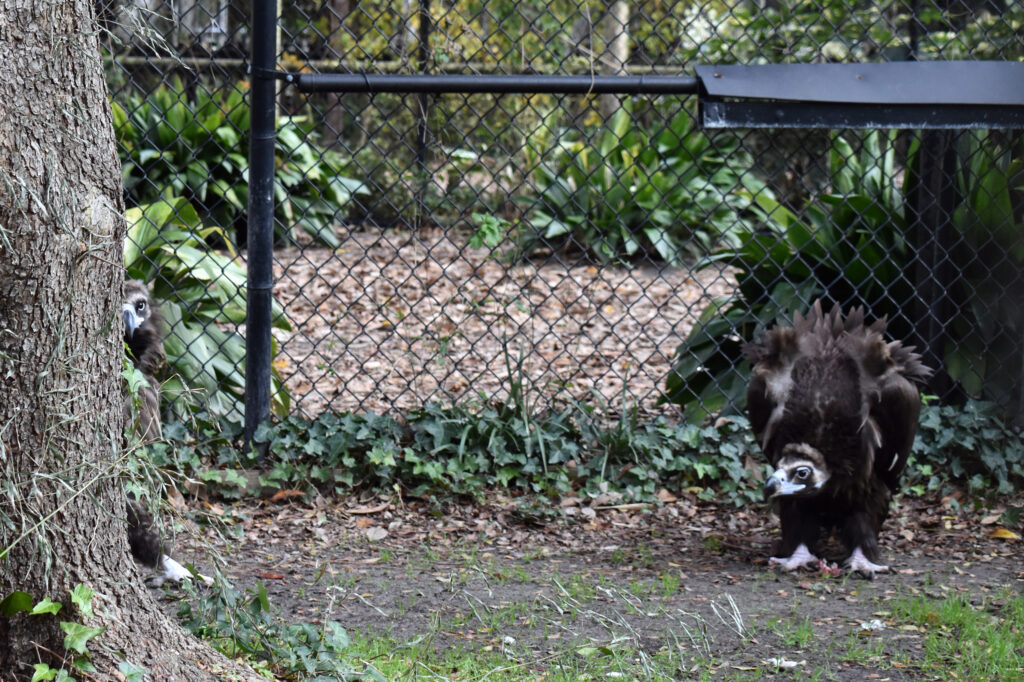
John Denver, also coined JD for short, and Eve have acclimated well to each other, and JD is spreading his wings to become more comfortable in his new home as well. Keepers say he was initially shy around them, but with Eve guiding him, he has become more comfortable around staff.
Animal Care staff are hopeful for the pair to breed in the future, a goal of the SSP, to help save their species, which is listed as near threatened to extinction due to human-animal conflict such as poisoning. The species’ global population is estimated at 14,000-20,000 mature individuals. While it may take a few tries, and even a few years, for the pair to breed, any offspring would aid in preventing this species from going extinct.
Cinereous vultures are also called monk vultures, black vultures and Eurasian black vultures, are one of the largest and heaviest raptors, or birds of prey. These flighted birds can weigh up to 28 pounds and measure over three-and-a-half feet tall with a massive wingspan of 10 feet. The species has a wide range, and their native habitats in European countries like Spain and France, and in parts of Asia and the Middle East like China, India, and Turkey. Some cinereous vultures have even been documented atop Mount Everest.
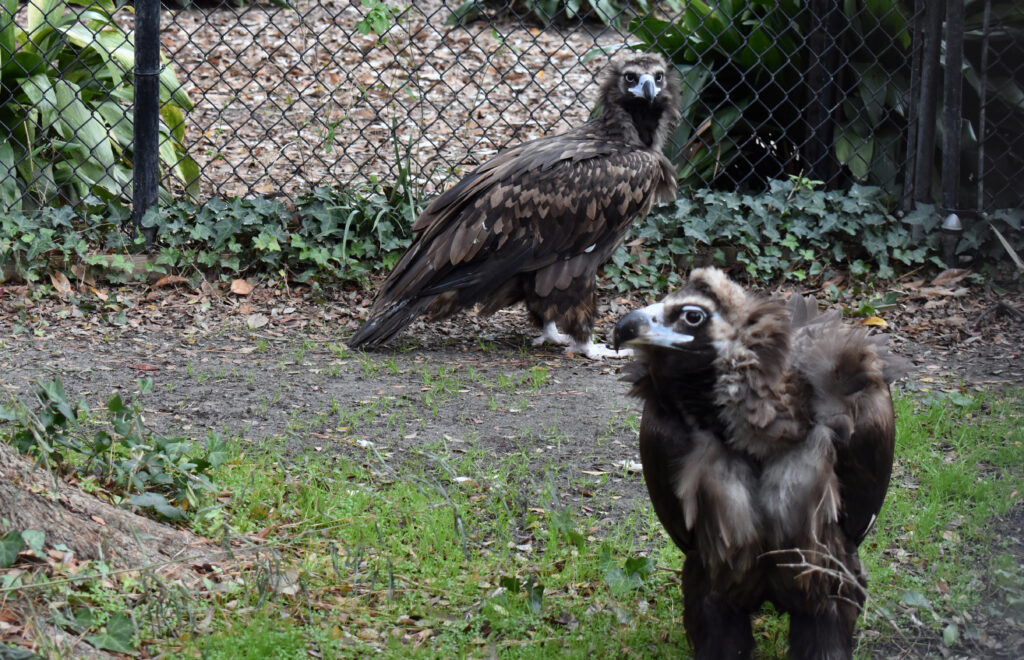
The Zoo’s cinereous vultures can be seen on exhibit year-round. JD and Eve can be distinguished by their feather patterns; Eve has more solid feathers on her body with white patches on her wing, while John Denver’s feathers are more marbled.
